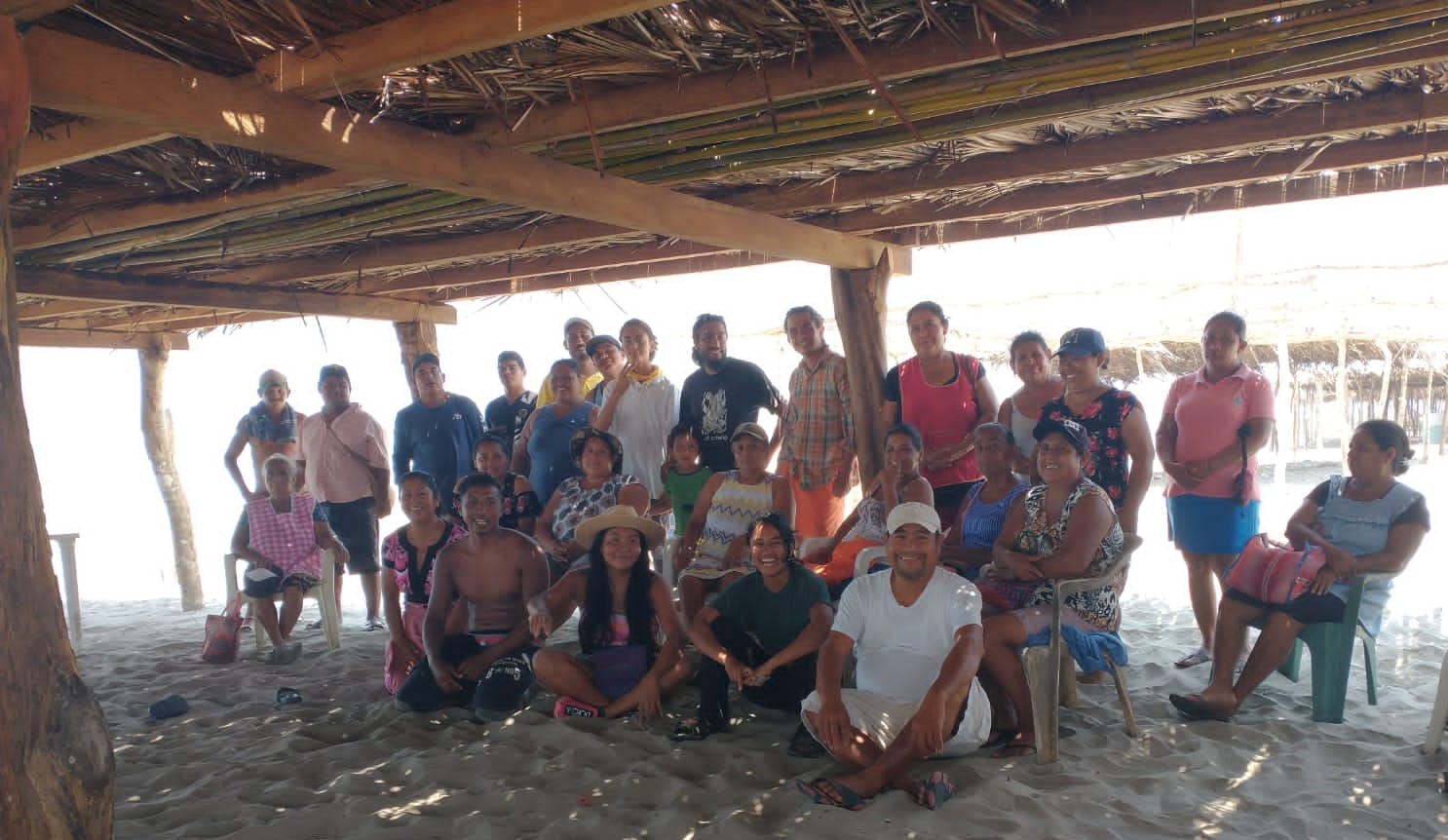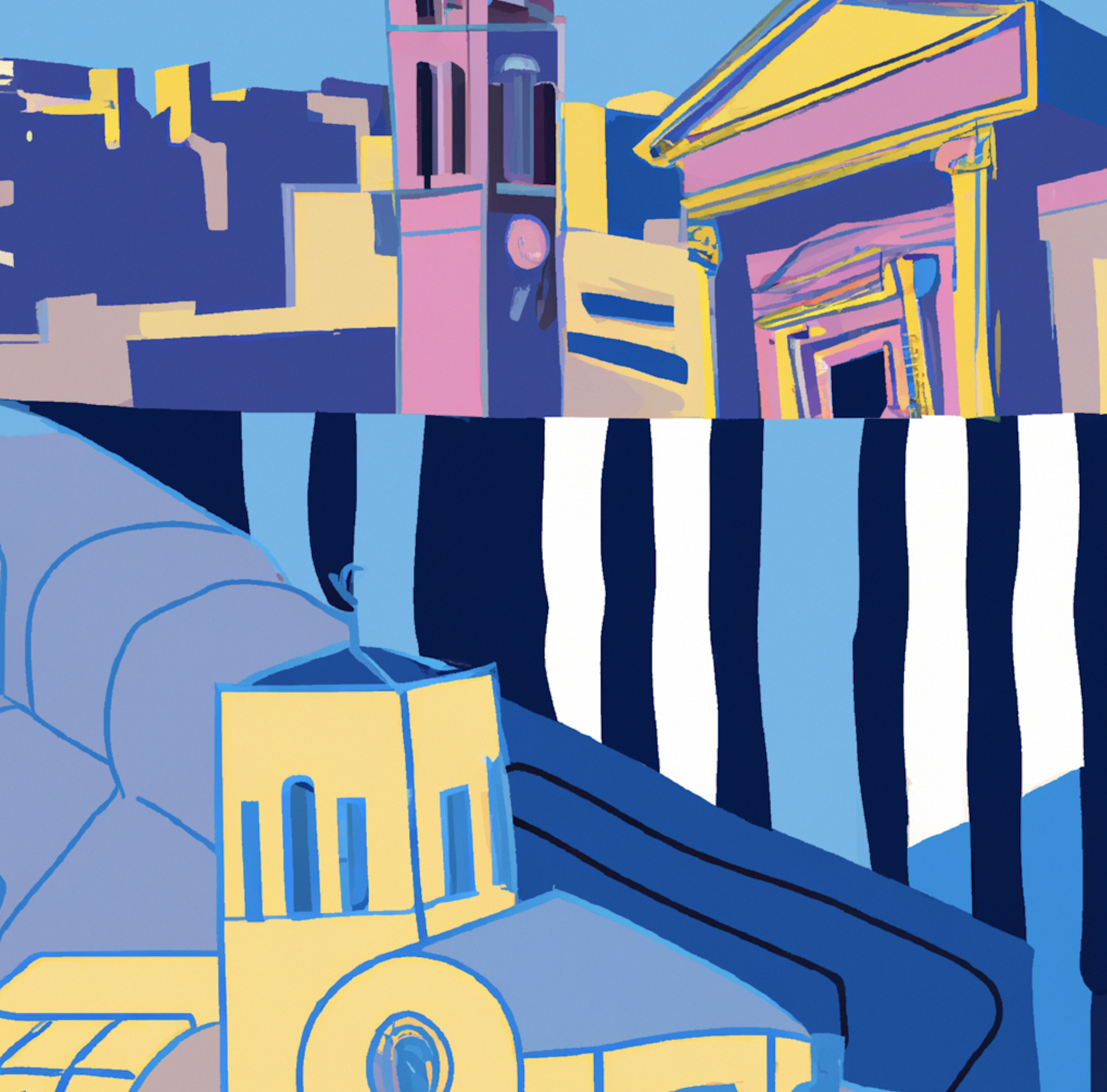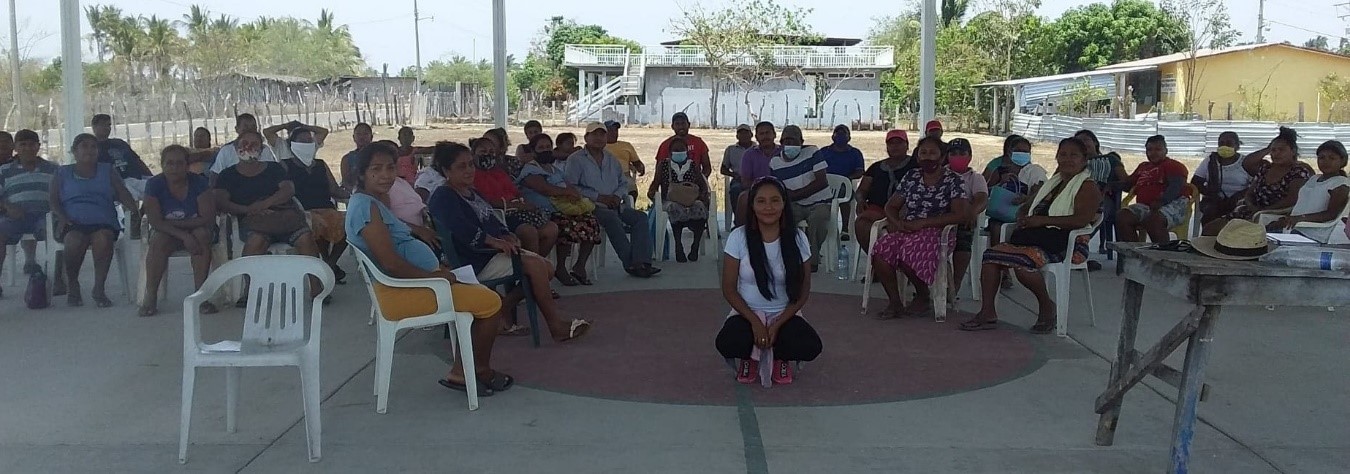by leticia carpio cortes
coeditors:
-dr. ulises moreno tabárez;
-dra. dulce maría quintero romero;
-dr. Héctor Becerril;
-dra. rocio lopez velasco
“I am the black man from the coasts of Guerrero and Oaxaca, don’t teach me how to kill because I know how to kill” is the verse from a very popular song on the Mexican Pacific coast, which describes well who and how San Marcos is, an Afro-indigenous pueblo in the southwestern part of Mexico that dances Colombian cumbia and Chilean music to the rhythm of “la sanmarqueña“, eats pozole every Thursday, and shoots bullets to the sky to celebrate New Year’s Eve. The sea, the beach, the lagoon, its pools, its mountains, its bread, alcohol, partying, weapons, cacicazgo, drug trafficking, and violence are some of the elements that characterize the municipality of San Marcos, belonging to the state of Guerrero, the place where I was born and the space that I inhabit.
Here I present the work of the tourist service cooperative “Puesta de Sol: El Dorado”, who represent the drive for community-based tourism in San Marcos.
San Marcos, a neighboring town of the port of Acapulco, also known as “the golden gateway of the Costa Chica” (for being the municipality where this region begins), is a place paradoxically marked by a lack of money, lack of opportunities, and the absence of rights for the majority of its population, but with a rich biodiversity that allows us to live despite the shortages. The lagoon provides us with rich food such as crab and snook, while aquifers quench our thirst. Among the economic activities that are most practiced are agriculture, livestock, fishing, and commerce; tourism still does not appear as a relevant economic activity for the local population.
However, due to its proximity to Acapulco, one of the first tourist destinations in Mexican history, San Marcos is being dragged, amidst coercion and misinformation, towards a tourist development project called “Riviera San Marcos.” This has generated division and internal conflicts among ejidos (communal landholdings), according to interviews with ejidatarios (communal landowners), the company pays people from one ejido to invade another ejido of their interest, generating a conflict that facilitates their entry into these lands. These people are called “paleros” by the communities, specific individuals from the community who, through intimidation and threats, force the owners to sell their lands at a low cost, as can be observed in the following testimony:
“We received threats, you see that the commissaries or people who come, they are called “paleros” here, who say ‘Hey, you know what? You’re going to sell the lands because if not they’re going to take them away anyway.'” (Interviewee 4: 2016)
It should be noted that “Riviera San Marcos” is a priority project for the state government of Guerrero, and it is intended to be on par with the Riviera Maya. It is part of a tourist corridor with 40 km and an area of 7,000 hectares of tourist infrastructure in the municipality of San Marcos, which is integrated into the tourist expansion of Acapulco up to the city of Huatulco, as stated by Governor Evelyn Salgado Pineda at the 2022 Tourism Fair (mvs noticias 2022). It has an investment of more than 3.5 billion dollars, and one of the investment groups is grupo questro, which has been accused of dispossession and environmental damage in other mexican territories (see Photo 1). An example is the town of Playa San José del Cabo, where a 200-hectare property was invaded by the private security group ERCO and unidentified individuals. The same area where the National Fund for Tourism Development (FONATUR) and the company Grupo Questro began a residential tourism development called “Puerto Los Cabos,” forcing fishing families and ejidatarios who had maintained possession rights over their lands for generations to move to the outskirts of the project (Valiente, 2010). In the case of San Marcos, there are no experiences of forced displacement yet, but there are accounts of armed outsiders on El Dorado beach who identify themselves as “private security guarding the beach.”

Although “Riviera San Marcos” is still an incipient tourist development process that has not expressed displacement and environmental damage in San Marcos, it represents the expansion of the tourist development of Acapulco, which has been marked by processes of expropriation carried out by the federal government, resulting in the eviction of residents who lived on the beaches and their relocation to the outskirts of Acapulco. Meanwhile, areas of tourist interest were sold at very low cost to public officials and/or their relatives (Gómezjara, 1970).
Likewise, the problem of land dispossession not only generated the expulsion of native inhabitants but also unplanned city growth due to the exclusion of local and migrant residents from the Costa Grande who came to Acapulco in search of employment (Ramírez, 1987). In terms of the environment, the pollution of the waters stands out due to the discharge of sewage into the sea from hotels as well as popular residences and homes (Ramírez, 1987), inadequate waste management, and the lack of water distribution for domestic use in popular and peripheral areas of Acapulco. If this has been Acapulco’s history, what will be the fate of San Marcos?
How did I become interested and involved in this issue?
As a local resident, I became interested in the issue of land ownership and tourist development when I noticed the sudden wealth of certain landowners in my town. When I entered university, I discovered that the buying and selling of beachfront land was done through threats, lies, and murders of original landowners by armed men who often kept the payment for the land, all under the pretext of tourist development. This sparked my interest in activism and led me to investigate similar cases in other regions to understand how tourist development affects local communities.
My work as an academic and activist focuses on understanding land dispossession caused by tourism, particularly in my hometown of San Marcos. Through my activism and community work in San Marcos, I collaborated and developed alliances with key actors such as the tourist service cooperative “Puesta de Sol: El Dorado,” which defends its right to work on the beach. Currently, I am working on a proposal for sustainable local tourism as an alternative development generated by and for the local population of the municipality of San Marcos and as a pretext for generating collective reflection on the fate of San Marcos.
The specific objectives that guide this work are: 1) to identify the natural, historical, and cultural assets and attractions that San Marcos has; 2) to identify the capacities and positions of the population of San Marcos regarding “Riviera San Marcos” and sustainable local tourism; and 3) to collaboratively develop a proposal for sustainable local tourism for San Marcos. However, these objectives allowed me to identify other necessary tasks: the realization of a socio-ecological diagnosis and the involvement, articulation, and participation of the academic, agrarian, and civil society sectors.
Carrying out these last tasks has allowed the formation of an interdisciplinary research-action group with academics from different disciplines and universities, students, agrarian authorities, and local families that provide tourist services, representing an opportunity for the construction of solidarity networks where academic and social institutions can join proposals and commitments for future collaboration.
What have I done so far?
In coordination with social organizations and supportive colleagues who have come from different places, we have conducted agroecological workshops for the tourist service cooperative “Puesta del Sol: El Dorado.” We have also held sports events (soccer and surfing) and a promotional video for the cooperative (which is included in the introduction of this blog).
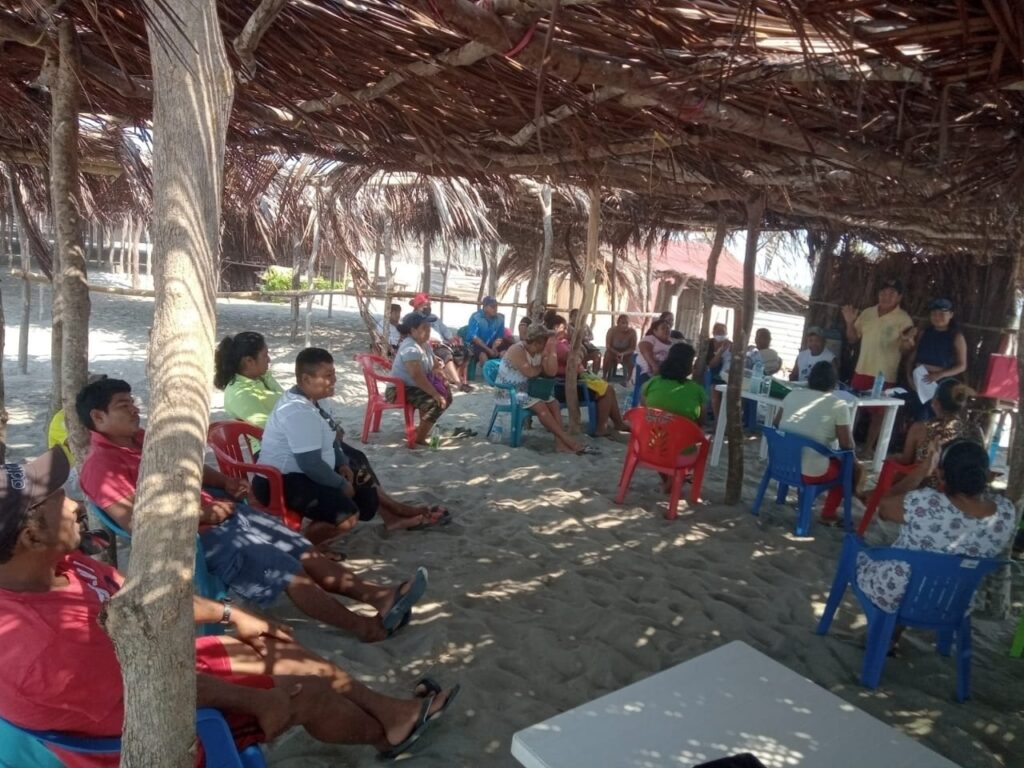
Our research-action group has also conducted visits to 10 communities that have natural attractions and resources, such as sea, beach, lagoon, pools, and hot springs. During these visits, we conducted interviews, focus groups, and participated in observation. We interviewed people from coastal communities and state government officials to understand their position and the information they have received. We also tried to access the tourism development plan, but we were unable to obtain it due to the lack of publicly available information channels. As part of our research, we also collected audiovisual material to contribute to the socio-ecological diagnosis and document the biocultural memory of the area.
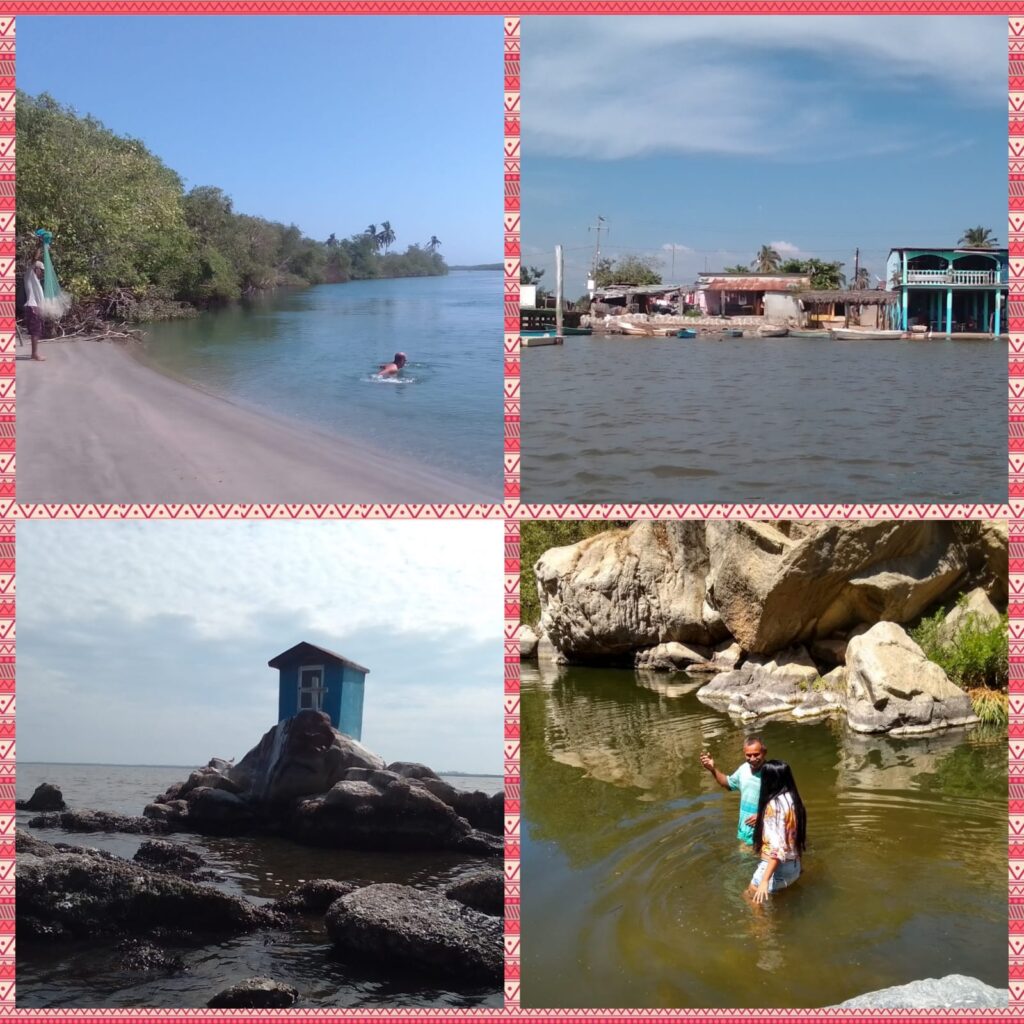

Currently, we are analyzing the information from the interviews to have a first cut in the diagnosis.
findings
During the site visits, I found a lack of information about the tourist project in the communities, with only rumors of a tourist development for San Marcos and stories of closures to beach access and bodies of water by private initiatives.
I also found collective responses to these privatization actions, with communities that have organized to tear down fences and reoccupy their spaces, such as the cooperative of tourist services “Puesta de Sol: El Dorado”, which is made up of families that in 2017 broke the fence that prevented access to El Dorado beach.
I found oppression of women and how this generates disconnection with nature and ignorance of it. The vast majority of women are forbidden from going into the mountains, camping on the beach, or sleeping outside of their homes, under the false argument of “being women is dangerous”. Traditionally, activities involving more contact with nature, such as fishing, hunting, and gathering firewood, are carried out by men. The house is the space expected for women to occupy, not the space of nature. Most San Marcos women do not know the territory of San Marcos.
I observed very diverse opinions regarding the “Riviera San Marcos” project and tourism in general, and little interest in developing a local tourism proposal. For example, some see it as an opportunity, others as a threat, and some are not interested at all. These fears, desires, and disinterest are sustained by official discourses, lack of information, rumors, and assumptions. I observed little or no relationship with tourism as a work activity and the ignorance of tourism models other than the massive sun and beach tourism that they have seen in Acapulco. I identified the fracture of the social fabric as a consequence of intra-family violence and poverty. I perceived certain resignation in the face of the onslaught by governmental authorities and business groups, marked by the dynamics of local power and cacique, the presence of armed groups and drug trafficking, and the systematic violation of rights by those who hold power.
What do I hope to achieve in the near future? Upcoming actions to undertake
In the short term, I hope to consolidate the research-action group and inform the local population of the first advances in the socio-ecological diagnosis, mainly in the coastal strip communities. I hope to work collectively in the construction of knowledge and wisdom that promote reflection and community action for the well-being of San Marcos and its surroundings.
Among the upcoming actions to be carried out are: the analysis of the interviews to have a first advance in the socio-ecological diagnosis; the dissemination of the findings found in the diagnosis and the integration of key local actors in the development of the sustainable local tourism proposal. All of this in a social scenario marked by violence, political clientelism, the fracture of the social fabric, and the presence of drug trafficking; a very complex task that I invite you to follow in the next blogs of this series.
references
gómezjara, francisco. (1974). “acapulco: despojo y turismo”. turismo”. en instituto de investigaciones económicas, unam. consultado el 14 de marzo de 2023 en: vista de acapulco: despojo y turismo (unam.mx)
ramírez, juan manuel. (1987). “turismo y medio ambiente: el caso de acapulco”. en estudios demográficos y urbanos. colmex. consultado el 14 de marzo de 2023 en: turismo y medio ambiente: el caso de acapulco | estudios demográficos y urbanos (colmex.mx)
valiente, carmina (directora). (2010) baja all exclusive: la otra cara de los desarrollos turísticos en sudcalifornia. consultado el 14 de marzo de 2023 en: baja all-exclusive – youtube

